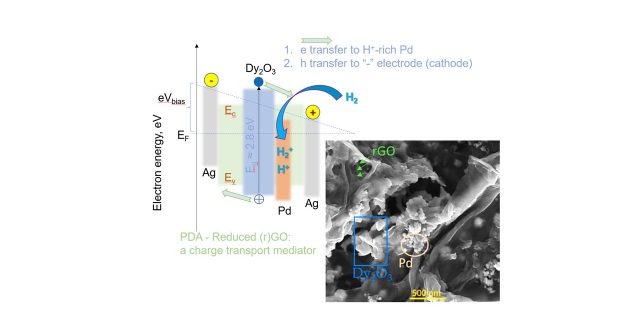
Conductometric Hydrogen sensing enhanced by UV illumination
WRHIからのお知らせ おすすめ
物質理工学院 Saulius Juodkazis特任教授の国際共著論文
“Two-Dimensional Dy2O3-Pd-PDA/rGO Heterojunction Nanocomposite: Synergistic Effects of Hybridisation, UV Illumination and Relative Humidity on Hydrogen Gas Sensing”
が、Chemosensors に掲載されました。(DOI:10.3390/chemosensors10020078 )
詳しくはこちら
<Abstract>
A two-dimensional (2D) Dy2O3-Pd-PDA/rGO heterojunction nanocomposite has been synthesised and tested for hydrogen (H2) gas sensing under various functioning conditions, including different H2 concentrations (50 ppm up to 6000 ppm), relative humidity (up to 25 %RH) and working temperature (up to 200 °C). The material characterisation of Dy2O3-Pd-PDA/rGO nanocomposite performed using various techniques confirms uniform distribution of Pd NPs and 2D Dy2O3 nanostructures on multi-layered porous structure of PDA/rGO nanosheets (NSs) while forming a nanocomposite. Moreover, fundamental hydrogen sensing mechanisms, including the effect of UV illumination and relative humidity (%RH), are investigated. It is observed that the sensing performance is improved as the operating temperature increases from room temperature (RT = 30 °C) to the optimum temperature of 150 °C. The humidity effect investigation revealed a drastic enhancement in sensing parameters as the %RH increased up to 20%. The highest response was found to be 145.2% towards 5000 ppm H2 at 150 °C and 20 %RH under UV illumination (365 nm). This work offers a highly sensitive and selective hydrogen sensor based on a novel 2D nanocomposite using an environmentally friendly and energy-saving synthesis approach, enabling us to detect hydrogen molecules experimentally down to 50 ppm.
